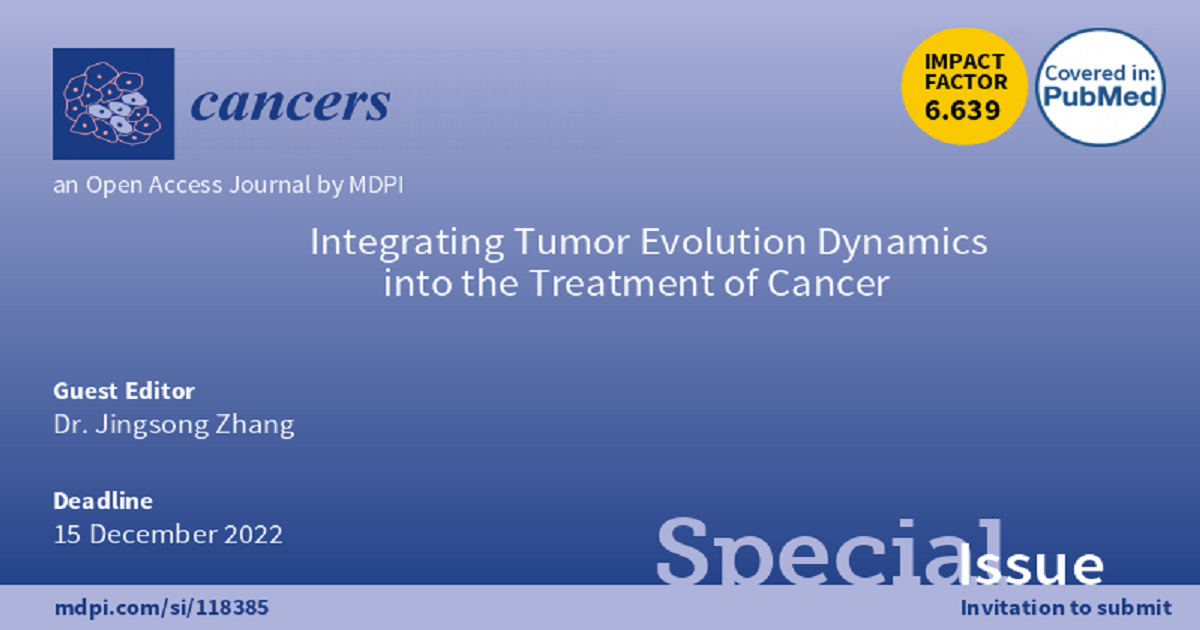Integrating Tumor Evolution Dynamics into the Treatment of Cancer
A special issue of Cancers (ISSN 2072-6694). This special issue belongs to the section "Clinical Research of Cancer".
Deadline for manuscript submissions: closed (31 January 2024) | Viewed by 5842

Special Issue Editor
Special Issue Information
Dear Colleagues,
We are pleased to invite you to submit your research to this Special Issue which invites studies integrating tumor evolution dynamics into the treatment of cancer. Despite recent approvals of targeted therapies and immunotherapies, stage IV cancer remains incurable. While continued development of new drugs is needed, we believe that improved survival of metastatic cancer can be obtained through better utilization of existing agents using treatment strategies guided by intra-tumor evolutionary dynamics. Over the past 10 years, oncologists, evolutionary biologists, mathematicians, and cancer biologists have teamed up to challenge the current threat to a progression paradigm. The promises of the adaptive therapy approach have been seen in early-phase prostate cancer trials.
I would like to invite you to submit your original research papers, reviews, communications, and clinical trial papers. Our goal is to facilitate communications and collaborations in this emerging field. Clinical trials with meaningful but negative results, or ongoing clinical trials with a novel design, will be accepted as well.
I look forward to receiving your contributions.
Dr. Jingsong Zhang
Guest Editor
Manuscript Submission Information
Manuscripts should be submitted online at www.mdpi.com by registering and logging in to this website. Once you are registered, click here to go to the submission form. Manuscripts can be submitted until the deadline. All submissions that pass pre-check are peer-reviewed. Accepted papers will be published continuously in the journal (as soon as accepted) and will be listed together on the special issue website. Research articles, review articles as well as short communications are invited. For planned papers, a title and short abstract (about 100 words) can be sent to the Editorial Office for announcement on this website.
Submitted manuscripts should not have been published previously, nor be under consideration for publication elsewhere (except conference proceedings papers). All manuscripts are thoroughly refereed through a single-blind peer-review process. A guide for authors and other relevant information for submission of manuscripts is available on the Instructions for Authors page. Cancers is an international peer-reviewed open access semimonthly journal published by MDPI.
Please visit the Instructions for Authors page before submitting a manuscript. The Article Processing Charge (APC) for publication in this open access journal is 2900 CHF (Swiss Francs). Submitted papers should be well formatted and use good English. Authors may use MDPI's English editing service prior to publication or during author revisions.
Keywords
- tumor evolution
- adaptive therapy
- extinction therapy
- mathematical modeling
- clinical trial






